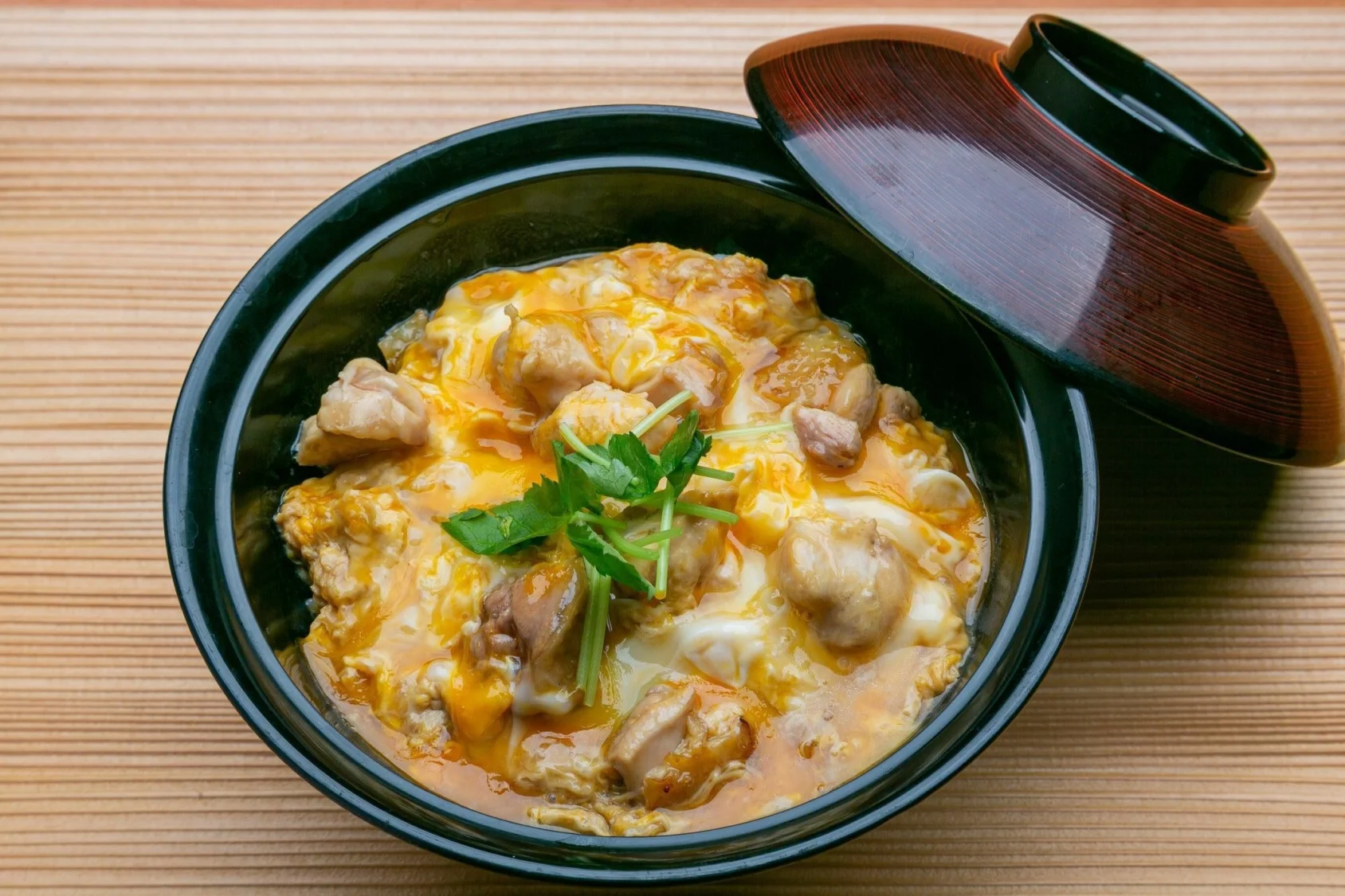
Oyakodon
Chicken and egg rice bowl.
Ingredients
- •Chicken
- •Eggs
- •Onions
- •Dashi
- •Rice
Instructions
Cook Chicken
Simmer chicken and onions in sauce
Add Egg
Pour beaten eggs and cook until set
Oyakodon is a beloved Japanese comfort food whose name tells a touching story - "oyako" means "parent and child" in Japanese, referring to the combination of chicken (the parent) and egg (the child) served together over a bowl of steaming rice. This hearty rice bowl dish features tender pieces of chicken and onions simmered in a sweet-savory dashi-based sauce, with silky eggs poured over to create a luxurious coating.
The dish originated in Japan during the Meiji period (1868-1912) and quickly became a staple of Japanese home cooking. It was first served in chicken restaurants in Tokyo, where it provided a quick, satisfying meal for busy workers. Today, it remains one of Japan's most popular donburi (rice bowl) dishes.
To prepare Oyakodon, chicken and sliced onions are first simmered in a flavorful mixture of dashi, soy sauce, mirin, and sake. Once the chicken is cooked through and the onions are tender, beaten eggs are gently poured over the top. The key is to cook the eggs just until they're set but still maintain a slight creaminess. The entire mixture is then served over a bowl of hot rice, where the sauce can be absorbed into the grains.
While the classic recipe is beloved, many households and restaurants put their own spin on Oyakodon. Some add green peas or other vegetables for color and nutrition, while others might adjust the sauce ratio to make it more sweet or savory. Some versions even include a sprinkle of shichimi togarashi (Japanese seven spice) for an extra kick of heat.
In Japan, Oyakodon is enjoyed at any time of day - it's equally popular as a lunch option at restaurants or as a quick dinner at home. It's often garnished with finely chopped green onions and sometimes a sprinkle of nori (seaweed) for added flavor and visual appeal.
From a nutritional standpoint, Oyakodon provides a good balance of protein from both the chicken and eggs, along with carbohydrates from the rice. However, those watching their sodium intake should be mindful of the soy sauce content in the dish. For a healthier version, you can use brown rice instead of white rice and increase the portion of vegetables. Those with gluten sensitivities should ensure they use gluten-free soy sauce, as traditional soy sauce contains wheat.
